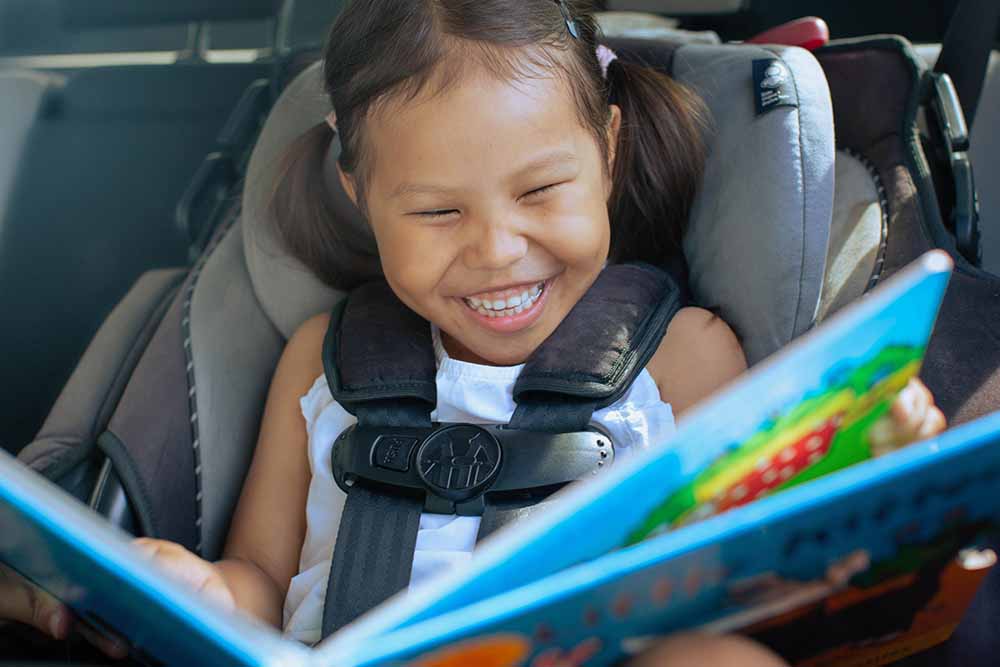
Got kids? Here’s what you need to know to keep them safe when they’re in the car (
Car seat types and standards Maintenance and replacements A secure installation is key Seatbelts are not a replacement Quick tips
Car seat types and standards
There are three stages of
While different provinces have different height and weight restrictions regarding child seat usage, Transport Canada has a National Safety Mark that delineates which seats meet specific Canadian standards. You might be tempted to go online to buy your child’s seat; know that it’s illegal to use seats that do not have this mark, and it’s also illegal to buy or sell them. Unregulated purchases can also interrupt a manufacturer’s ability to contact you for recalls or updates; you’ll have to contact them directly if you have questions.
Maintenance and replacements
Car seats, despite their considerable expense, do not last forever. Most have an expiry date on them, and it’s important. Plastic components break down in ultraviolet light, like that sunlight streaming through your vehicle’s windows. Normal usage means the webbing will end up receiving spills of everything from apple juice to drool, plus crumbs and debris can fall into the buckles and clips. Manufacturers have specific directions for how to clean your car seat, but be careful: never use lubricants or things like bleach or vinegar.
From the integrity of the plastic housing to the fire retardant coatings on the padding, every part of that seat is protecting your child. Damaged plastic or frayed webbing means it’s time for a replacement. Plus, when it comes to accepting a used car seat, remember that hand-me-downs are fine for clothing, but not so much when it comes to your child’s protection. A used car seat may appear to be fine, but you’ll have no idea if it’s safe.
If your child spends time in a grandparent or guardian’s vehicle, make sure their vehicles are properly outfitted with car seats. It’s safer to have seats installed securely instead of swapping them out - a rushed installation is a compromised one.
A secure installation is key
Securing a car seat can be tricky, and it’s vital that you get it right. Your first job is to make sure the seat itself is securely fastened to your vehicle. Since 2002, vehicles sold in Canada have been mandated to have a universal anchorage system (UAS) installed. You will need to get out your owner’s manual as well as the child seat manual to do some homework. If your car seat has a UAS tether, use it. If you’re having difficulty understanding the installation instructions, search for a car seat clinic in your area. It takes some muscle to get this tether strap pulled tight. Local assocations, including firefighters, do them frequently. Do not hesitate to go find out exactly how to use this important safety device properly; they’re there to help you, and studies have shown many, many seats are incorrectly installed.
With the seat secured to the UAS, the next step is securing the child into the seat. Just like adults have to have a seatbelt that fits closely, so do children. It’s something parents in cold climates don’t want to hear, but that bulky snowsuit or bunting bag is compromising your child’s safety. Opt for securely fitting, properly adjusted straps and cover your child with a blanket instead.
Seatbelts are not a replacement
Can my kid sit up front with me? Nope. Not even once. A vehicle’s seatbelts work in conjunction with its airbags - one system is not complete without the other. For the airbags to deploy and reduce injuries and fatalities, the seatbelt must be worn in a way that keeps the occupant in the proper position. Child safety seating devices are designed to position children for optimal safety, and the force of a front airbag hitting an undersized or under-secured child is incredibly dangerous. Remember: airbags, which can deploy in the event of a crash at speeds as low as 13 km/h, go off with a force that can reach 322 km/h. (Picture an F1 car.)
It’s tempting to cut corners on car seats, especially if you have multiple children and money is tight. But parents and guardians are the only things standing between injuries, or even fatalities. Both these numbers have tumbled in the decades that child safety seats have been on the market, which makes it even more vital that you’ve got the right car seat for your kid.
Quick tips
● Bring your child seats with you when buying a vehicle to make they all fit, especially if you have more than two children
● Read your owner’s manual for child settings for locks and windows, to prevent an automatic window from closing on small fingers or drawstrings
● Take a drive yourself with anyone you are entrusting to drive your child
● Periodically check for child seat recalls with the manufacturer
● Don’t drive without buckling up yourself - children learn by watching
No matter how comfortable and relaxing vehicles have become, the number one goal remains the same: safety, for you and your kids.